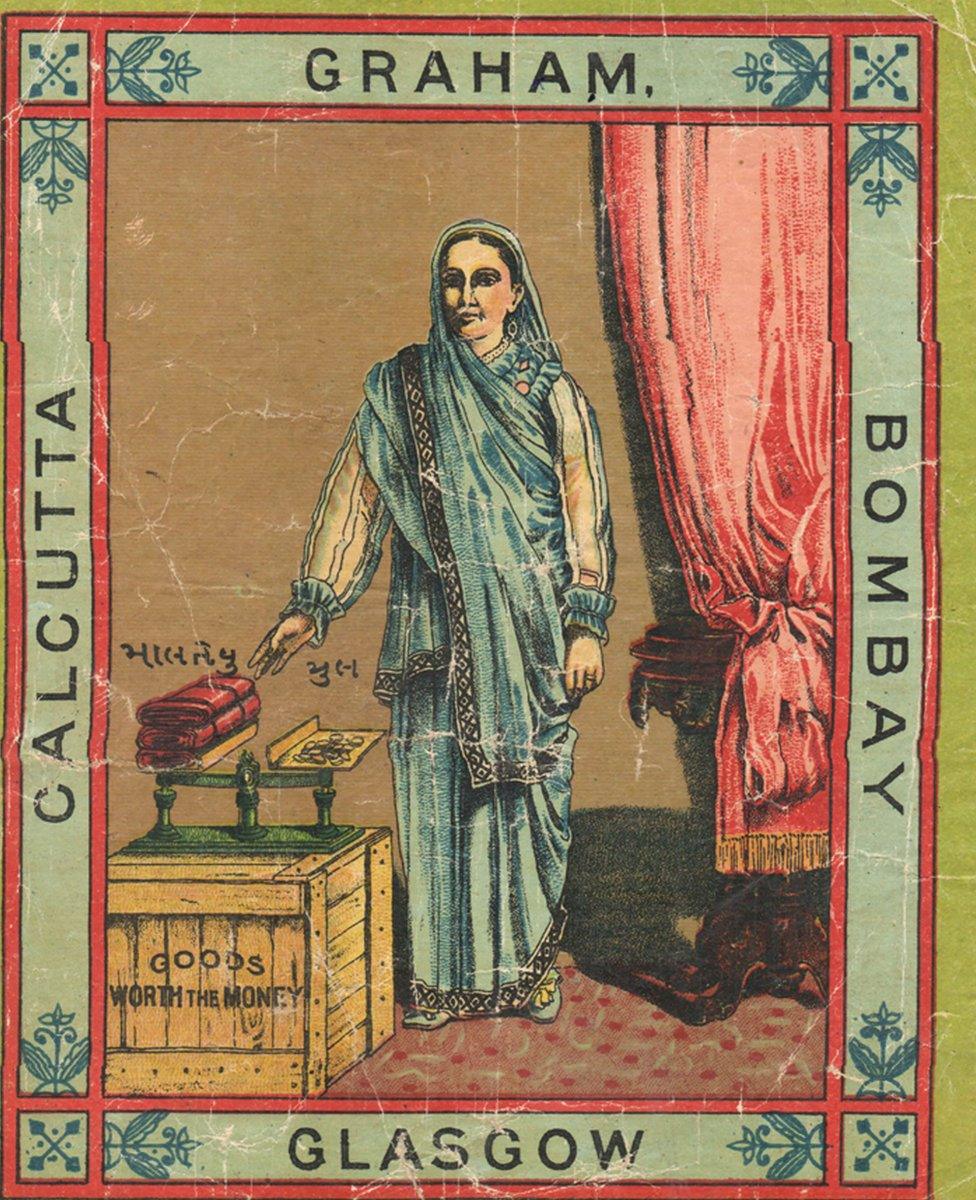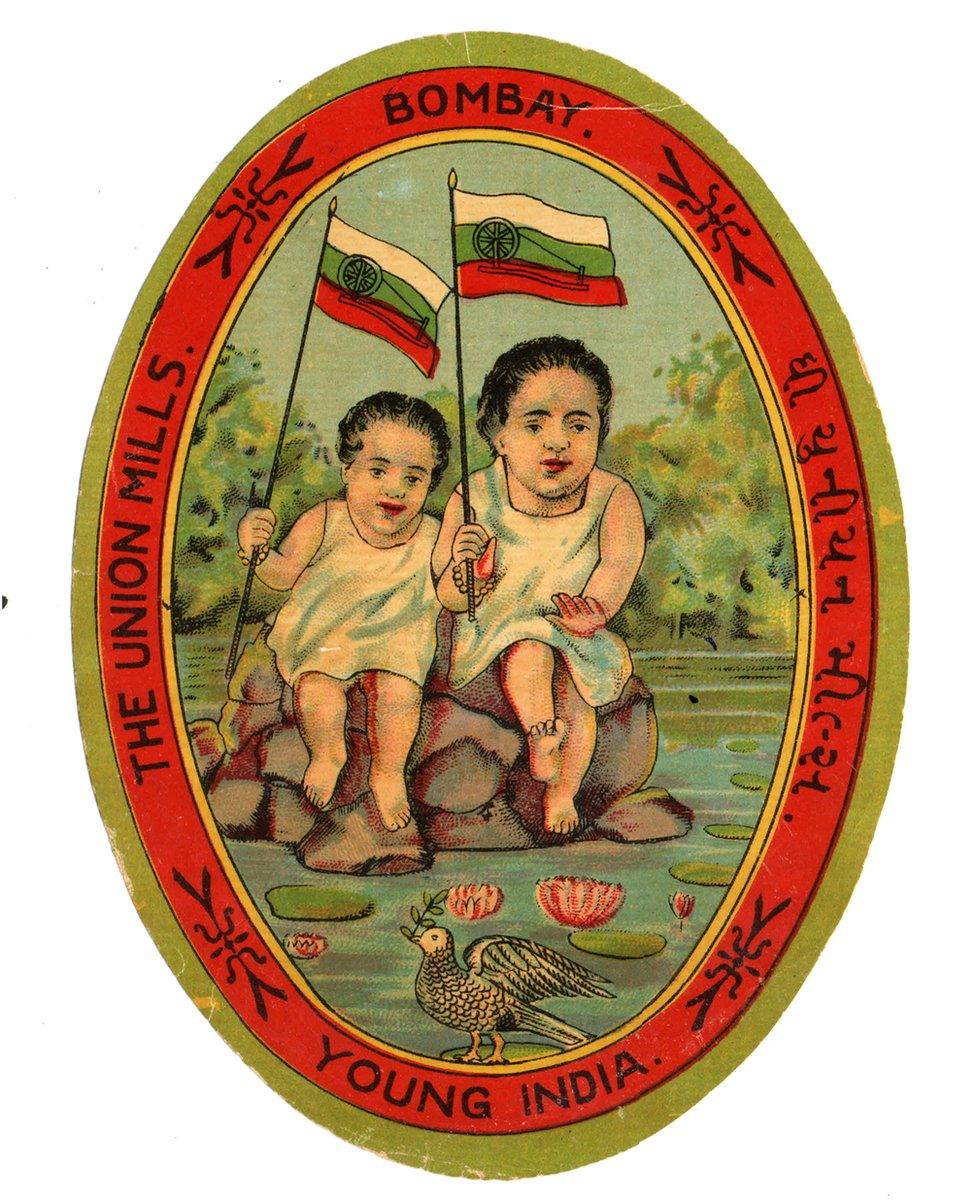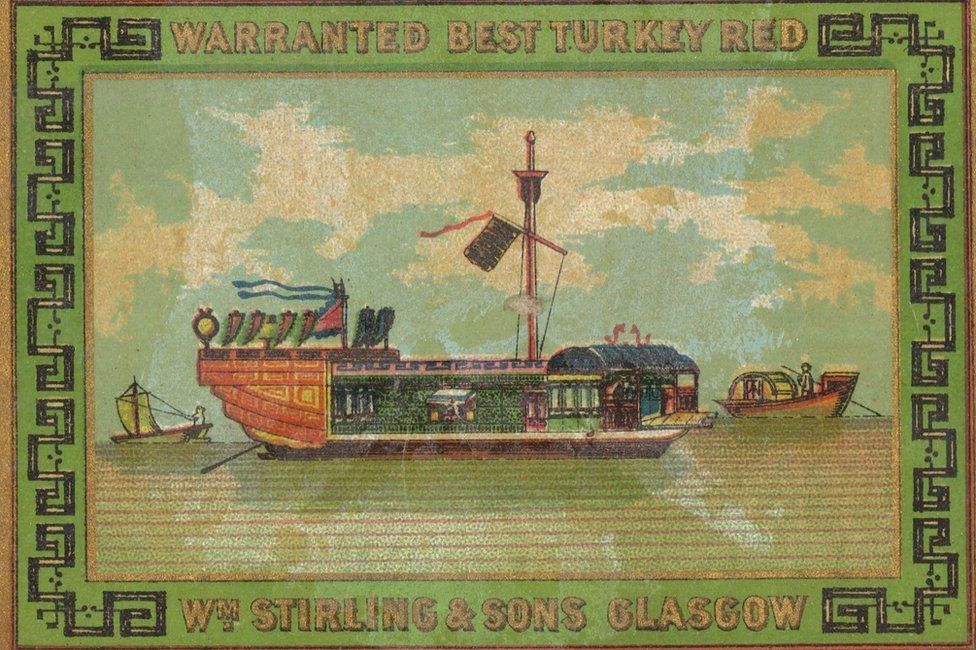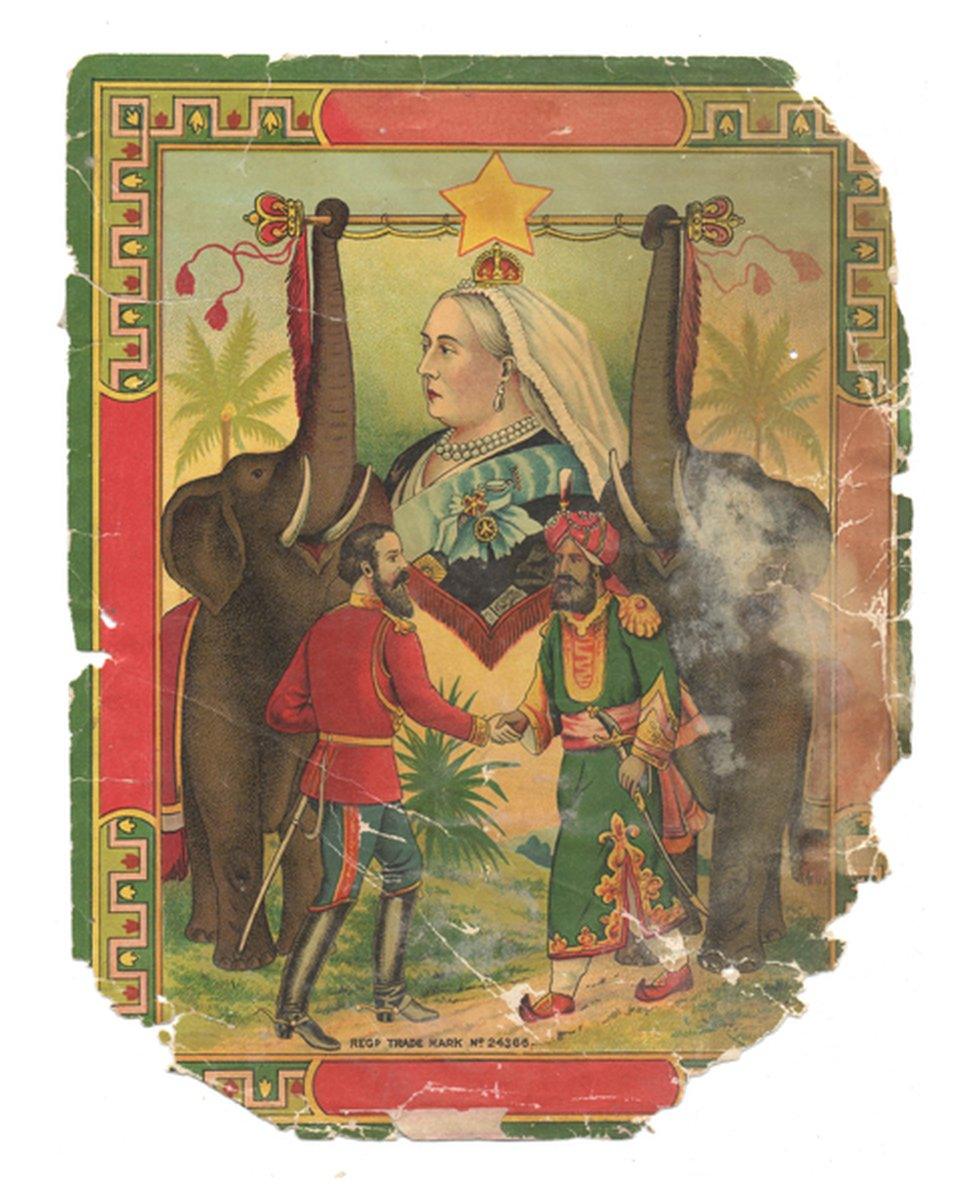Rare India textile labels show evolution of cotton trade
- Published

F Steiner & Co, Manchester, 1880s
Textile labels were once used as industrial markers of trade between India and Britain.
These "tickets" or "shipper's tickets", that would be attached on the front of bales of fabric during shipment, are now important historical artefacts.
A collection of these rare textile mill labels was recently displayed at an exhibition in the western Indian city of Mumbai.

Graham, Manchester, ‘Goods worth the money’, late 19th Century
"These colourful chromolithographs are precursors of graphic design and mass communication, designed in Britain, printed in Germany, and shipped to distant markets in colonial India," said Radhi Parekh, director of Artisans, external, which organised the show.

Graham, Manchester, late 19th Century
"The labels were used in conjunction with water soluble ink trademarks to identify the brand, type and length of fabric in the piece," according to archivist Adrian Wilson.

'Hanuman Chaap' from Morarjee Goculdass Spinning & Weaving Co Ltd Mills, Bombay, 1920s
Indian markets were flooded with British mill-woven cotton goods and the labels with images of Indian flora and fauna, gods and goddesses, mythology and important people were designed to make them more appealing to consumers in India, with whom the producers had little direct contact.

Chika Ltd. Bombay, Chemical Dyes, Made in India, Post-1940s, Offset
The early labels are chromolithographs which reached colonial India's ports in Karachi, Calcutta (now Kolkata) and Bombay (now Mumbai).

'Young India' by The Union Mills, Bombay, 1930s
Textiles were also significant to the Indian independence movement.
When Mahatma Gandhi launched the Swadeshi movement in 1918, he called for a boycott on foreign cloth, and advocated the spinning of Khadi cotton.

Warranted Best Turkey Red (a natural textile dye), William Stirling & Sons, Glasgow, 1880s
Simultaneously, Indian industrialists launched the first spinning and weaving mills in Mumbai and Ahmedabad city in Gujarat.

Unknown manufacturer, late 19th Century
Textile labels offer a rare insight into the evolution of the global cotton trade during the British Raj, and beyond - into independent India.